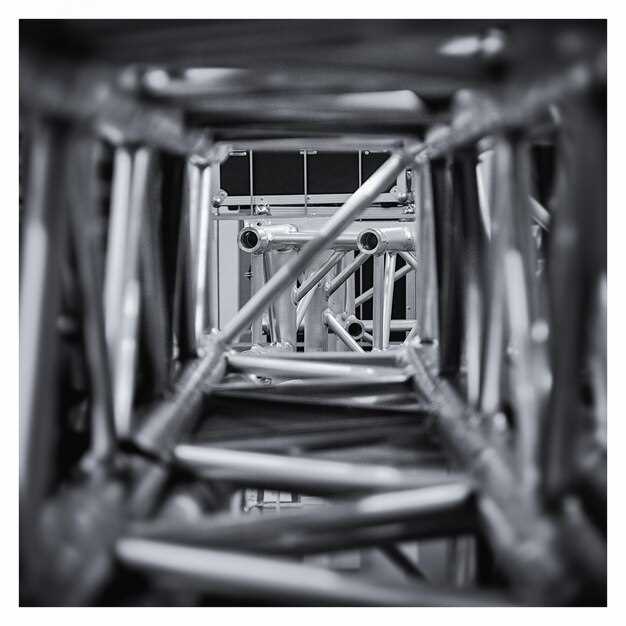
In the realm of automotive safety upgrades, the terms roll bar and roll cage frequently arise, often leaving vehicle owners confused about which option is the most effective for their needs. Both structures are designed to provide added protection during rollover incidents, yet their designs and applications differ significantly. Understanding these differences is crucial for anyone looking to enhance their vehicle’s safety features.
A roll bar is a simpler structure, typically consisting of a single or double bar installed to safeguard the occupants in case of an accident. While it provides a degree of protection, it lacks the comprehensive safety benefits that a roll cage offers. On the other hand, a roll cage provides a more robust framework, encasing the vehicle’s interior and offering extensive reinforcement. This design not only protects passengers but also enhances the overall structural integrity of the vehicle.
When considering an upgrade for your vehicle’s safety, it is essential to evaluate your specific driving scenarios and safety requirements. For those engaged in motorsports or off-road activities, opting for a roll cage may be the more prudent choice, whereas casual drivers may find a roll bar sufficient. Ultimately, the decision hinges on balancing safety, practicality, and the intended use of the vehicle.
Roll Bar vs Roll Cage: Which is Better for Your Vehicle?

When it comes to enhancing the safety and performance of your vehicle, choosing between a roll bar and a roll cage is essential. Both options serve the purpose of protecting occupants in the event of a rollover or collision, but they differ significantly in design, application, and effectiveness.
Here are some key considerations to help you decide which upgrade is best for your vehicle:
- Design:
A roll bar is typically a single or dual structure that reinforces the vehicle’s chassis. It is relatively simple to install and is primarily designed for specific applications, such as off-road vehicles or sports cars. In contrast, a roll cage is a more comprehensive framework that encompasses the entire interior of the vehicle. It is designed to provide maximum protection during high-speed racing or extreme off-road conditions.
- Safety:
For enhanced safety, a roll cage offers superior protection compared to a roll bar. The robust nature of a cage distributes forces more evenly during an impact, reducing the likelihood of injury. Roll bars, while better than nothing, do not provide the same level of comprehensive safety since they are not designed to protect all sides of the vehicle.
- Weight:
Installing a roll bar generally adds less weight to your vehicle compared to a roll cage. This can be beneficial for those who prioritize speed and agility. However, keep in mind that the added weight of a roll cage can contribute to overall vehicle stability, particularly in racing situations.
- Usage:
Consider how you plan to use your vehicle. If your driving is limited to casual off-roading or occasional track days, a roll bar might suffice. For competitive racing or extreme off-roading, a roll cage is a necessary investment for safety and compliance with regulations.
- Cost:
While both options require investment, roll bars are generally more affordable and easier to install. Roll cages, due to their complexity and additional materials, often come at a higher price point. Evaluate your budget when making a decision.
In conclusion, choosing between a roll bar and a roll cage ultimately depends on your specific needs, vehicle type, and intended use. If safety is your primary concern, especially in high-impact situations, a roll cage is the superior upgrade. If you are looking for a moderate enhancement to protect against minor mishaps, a roll bar could be a suitable choice.
Understanding the Structural Differences Between Roll Bars and Roll Cages
When considering vehicle safety upgrades, it is essential to understand the structural differences between roll bars and roll cages. A roll bar is typically a single structural element designed to provide a degree of protection in the event of a rollover. It generally consists of one or two horizontal or vertical bars that reinforce the vehicle’s frame, which can help to prevent cabin deformation during an accident. Roll bars are often lighter and less complex, making them a popular choice for street vehicles or less extreme applications.
In contrast, a roll cage is a much more comprehensive safety structure that encases the passenger compartment in a network of tubing. Roll cages are designed to distribute impact forces throughout the vehicle’s frame, offering significantly more protection in high-risk situations, such as motorsport competitions. They typically feature multiple bars that connect at strategic points, creating a robust framework that helps maintain the integrity of the vehicle during a crash. The upgrade from a roll bar to a roll cage is crucial for serious racing enthusiasts seeking maximum safety.
Furthermore, the design and construction of roll cages are subject to specific safety regulations, especially in competitive motorsports, which often mandate certain standards for materials and configurations. While both roll bars and roll cages enhance safety, the choice between the two should be based on the intended use of the vehicle, required level of protection, and compliance with any applicable regulations.
Evaluating Safety Benefits and Driver Protection in High-Risk Situations
When it comes to enhancing vehicle safety in high-risk scenarios, understanding the differences between roll bars and roll cages is essential. Both structures provide critical support during accidents, but they offer varying levels of protection which ultimately influence driver safety during extreme situations.
A roll bar typically consists of a single bar or a framework designed to protect the occupants from potential rollover accidents. Its primary purpose is to provide a stable overhead structure that minimizes the risk of injury from sudden impacts. While roll bars are effective for certain applications, such as in some sports cars or off-road vehicles, they may not offer comprehensive protection in all high-risk scenarios.
In contrast, a roll cage is a more robust safety feature that encompasses the entire cabin area of the vehicle. Constructed from strong materials like steel or aluminum, the roll cage is engineered to withstand significant forces during a collision or rollover. This construction helps to distribute impact forces across the vehicle, providing enhanced driver protection. In high-speed or competitive environments, the benefits of a roll cage are particularly pronounced, as it can significantly reduce the risk of serious injury or fatality.
Involving competitive motorsports or off-roading, the advantages of employing a roll cage are clear. It not only protects the driver and passengers but also reinforces the structural integrity of the vehicle, making it a preferred option for those frequently navigating dangerous terrains. Furthermore, regulations in many racing organizations mandate the installation of roll cages, underscoring their critical role in driver safety.
In summary, while both roll bars and roll cages serve safety purposes, the level of protection they provide can differ noticeably. In high-risk situations, a roll cage emerges as the superior choice due to its comprehensive design and capacity to safeguard occupants against severe impacts. Evaluating these options based on the intended use of the vehicle is crucial for maximizing safety and driver protection.
Installation Considerations: Cost, Complexity, and Vehicle Compatibility

When deciding between a roll bar and a roll cage, several factors must be taken into account, including cost, complexity of installation, and compatibility with your specific vehicle. Each of these elements can significantly influence your choice and overall satisfaction with the upgrade.
Cost is often a primary consideration. Generally, roll bars tend to be less expensive than full roll cages due to their simpler design and reduced material requirements. However, the investment in a roll cage may offer better long-term safety benefits, especially for vehicles used in high-impact motorsport or off-road scenarios. It’s crucial to compare the costs not only of the parts but also of the labor involved in the installation–roll cages can require extensive modifications to your vehicle, potentially increasing overall expenses.
The complexity of installation is another vital aspect. Roll bars usually require minimal adjustments, making them easier to install for DIY enthusiasts. In contrast, a roll cage demands a higher level of technical knowledge and tools, as it involves welding and potentially significant alterations to the vehicle’s interior. This complexity may push some owners to seek professional assistance, further driving up costs.
Vehicle compatibility plays a critical role in the decision-making process. Some cars are designed with a specific type of roll protection in mind, making it essential to ensure that your chosen upgrade aligns with your vehicle’s structural integrity. Roll cages are often designed for specific models, while roll bars can be more universal. Evaluating manufacturer recommendations and experiences from other users of your vehicle type can provide valuable insight into which option will maximize both safety and performance.
Ultimately, the choice between a roll bar and a roll cage should be guided by your specific needs, intended use of the vehicle, and budget. Whether prioritizing cost, ease of installation, or compatibility, each factor contributes to enhancing your vehicle’s safety profile when rolling down the road.






